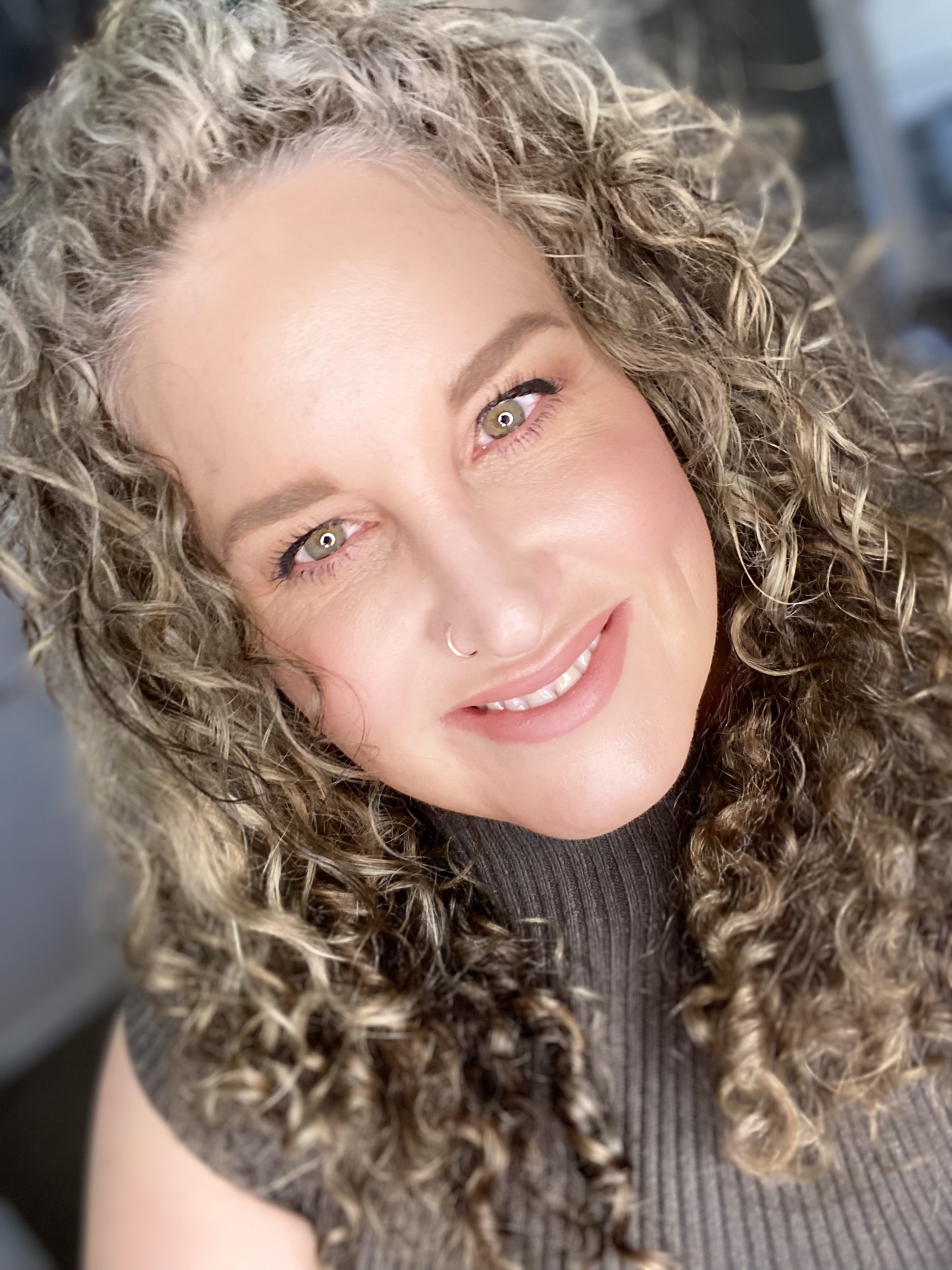
Fueling Your Brain: How Nutrition and Lifestyle Drive Mental Clarity and Focus
When it comes to overcoming burnout, brain fog, and fatigue, nutrition and lifestyle are your most powerful tools. What you eat and how you live directly impact your brain’s ability to focus, process information, and thrive. This week, we’re diving into the actionable steps you can take to optimize your diet and habits for sustainable energy and mental clarity.
The Brain-Food Connection: You Are What You Eat
Your brain is a high-performance organ, consuming up to 20% of your body’s energy. The quality of that energy—your food—can make or break your mental clarity.
Here’s how:
- Nutrient-Dense Foods provide the vitamins and minerals your brain needs to function optimally.
- Blood Sugar Stability ensures steady energy levels, preventing the crashes that lead to brain fog.
- Anti-Inflammatory Ingredients protect your brain from oxidative stress and inflammation, which impair focus and memory.
Key Nutrients for Brain Health
To fuel your brain, focus on these essential nutrients:
- Omega-3 Fatty Acids
Found in fatty fish (like salmon) and flaxseeds, omega-3s support cognitive function and reduce inflammation. - B-Vitamins
Vital for energy production and neurotransmitter function, B-vitamins are abundant in leafy greens, eggs, and legumes. - Magnesium
This calming mineral aids in stress reduction and brain function. Sources include nuts, seeds, and dark chocolate. - Antioxidants
Found in berries, dark chocolate, and green tea, antioxidants protect your brain from oxidative damage. - Choline
Essential for memory and brain cell communication, choline is found in eggs, broccoli, and peanuts.
Foods to Avoid
Just as important as what you eat is what you don’t eat. Certain foods can sabotage your mental clarity and energy:
- Refined Sugars: Cause blood sugar spikes and crashes, leaving you fatigued and foggy.
- Processed Foods: Contain additives and preservatives that promote inflammation.
- Trans Fats: Found in fried and processed foods, these fats impair brain function over time.
- Excess Caffeine: While a little caffeine can boost focus, overconsumption leads to anxiety and crashes.
The Role of Lifestyle in Mental Clarity
Your lifestyle habits are just as critical as your diet in optimizing brain health. Consider these shifts:
1. Hydration Is Key
Even mild dehydration can impair memory and concentration. Aim to drink half your body weight in ounces of water daily. Add lemon or a pinch of sea salt for electrolyte balance.
2. Move for Mental Energy
Exercise boosts blood flow and oxygen to the brain, enhancing focus and mood. Try these activities:
- Gentle morning yoga to reduce stress.
- Daily walks to clear your mind.
- Strength training to build resilience and energy.
3. Sleep Like a Pro
Sleep is when your brain detoxifies and processes the day’s information. Prioritize:
- 7-9 hours of quality sleep per night.
- A regular bedtime routine to signal your body it’s time to rest.
- Reducing blue light exposure in the evening.
4. Declutter Your Environment
A cluttered space creates a cluttered mind. Simplify your surroundings to reduce cognitive overload and improve focus.
5. Practice Mindful Eating
Slow down and savor your meals. This not only improves digestion but also strengthens your brain-gut connection, a critical component of mental clarity.
My Brain-Fueling Routine
For me, fueling my brain starts with the small, consistent habits that set the tone for my day. Here’s a glimpse of my routine:
- Morning: A smoothie packed with spinach, flaxseed, almond butter, and berries to jumpstart my brain.
- Midday: A walk outside to soak up natural light and recharge my energy.
- Evening: A magnesium-rich dinner of salmon and roasted vegetables, followed by chamomile tea to wind down.
These habits aren’t complicated, but they’ve transformed my focus, energy, and overall well-being.
Building Your Personalized Plan
The foundation of lasting mental clarity is creating a plan that works for your unique needs and lifestyle. That’s why I designed the BRAIN | FOCUS Masterclass and my Holistic Lifestyle Coaching Program to empower you with personalized strategies.
In the Masterclass, you’ll discover:
- The top brain-boosting foods and how to incorporate them.
- Lifestyle hacks to enhance focus and reduce stress.
- A blueprint for sustained mental clarity and energy.
Join the Free Masterclass Now and take the first step toward reclaiming your focus and vitality.
The Final Word
Your brain is your greatest asset. By nourishing it with the right foods and habits, you can break free from burnout, brain fog, and overwhelm. These shifts aren’t just about feeling better today—they’re about building a foundation for long-term health and vitality.
Next week, we’ll wrap up this month’s series by exploring how to create a holistic lifestyle blueprint that ties everything together for sustainable success.

Resetting Your Nervous System: The Key to Clarity, Energy, and Balance
Burnout is often described as hitting a wall—a sudden inability to keep going. But in reality, burnout is a slow erosion of your energy and clarity, driven by chronic stress and an overwhelmed nervous system. This week, we’ll focus on how to reset your nervous system, the foundation of your mental, emotional, and physical well-being.
What Is the Nervous System, and Why Does It Matter?
Your nervous system is your body’s control center, managing everything from your heartbeat to your stress response. It has two main components:
- Sympathetic Nervous System (SNS): Responsible for fight-or-flight responses during stress.
- Parasympathetic Nervous System (PNS): Responsible for rest-and-digest responses that help your body recover and heal.
Chronic stress keeps your SNS on high alert, flooding your body with cortisol and adrenaline. Over time, this leads to burnout, brain fog, and physical health issues like adrenal fatigue, autoimmune conditions, and hormonal imbalances. Resetting your nervous system shifts the balance back to your PNS, allowing your body to heal and restore itself.
Signs Your Nervous System Needs a Reset
- Persistent Brain Fog: Struggling to think clearly, remember details, or stay focused.
- Emotional Instability: Feeling overwhelmed, anxious, or irritable for no clear reason.
- Physical Symptoms: Chronic fatigue, digestive issues, or a racing heart.
- Sleep Problems: Difficulty falling asleep, staying asleep, or waking up exhausted.
Strategies to Reset Your Nervous System
1. Activate Your Vagus Nerve
The vagus nerve is the main player in your parasympathetic nervous system. Stimulating it can help calm your body and mind. Try these techniques:
- Deep Breathing: Practice diaphragmatic breathing, inhaling deeply through your nose for 4 counts, holding for 7 counts, and exhaling slowly through your mouth for 8 counts.
- Cold Exposure: Splash your face with cold water or end your shower with 30 seconds of cold water.
- Humming or Chanting: Vibrations from humming or chanting stimulate the vagus nerve, promoting relaxation.
2. Practice Mindfulness
Mindfulness brings you back to the present moment, reducing stress and improving clarity. Start with:
- Meditation: Even 5-10 minutes a day can lower stress levels.
- Body Scans: Lie down and slowly focus on each part of your body, noticing any tension and releasing it.
3. Balance Your Gut-Brain Axis
Your gut and brain communicate constantly, and an imbalanced gut can amplify stress. Support gut health by:
- Eating fiber-rich foods like vegetables, fruits, and whole grains.
- Incorporating probiotics (e.g., yogurt, kimchi) and prebiotics (e.g., garlic, onions).
- Avoiding inflammatory foods like refined sugar and processed snacks.
4. Rebuild Sleep Hygiene
Sleep is when your brain detoxifies and your body heals. To optimize your rest:
- Stick to a consistent sleep schedule.
- Limit screen time at least one hour before bed.
- Create a calming bedtime ritual with herbal tea or a warm bath.
5. Release Stuck Emotions
Unprocessed emotions create stress and mental fatigue. Use these practices to let go:
- Journaling: Write down your thoughts and feelings without judgment.
- Hypnosis: Work with your subconscious mind to address emotional blocks.
- Movement: Gentle exercises like yoga or tai chi help release emotional tension stored in your body.
My Personal Reset Routine
When I was deep in burnout, resetting my nervous system felt impossible. But small, consistent steps made a profound difference. My daily routine included:
- Morning meditation to set the tone for my day.
- A nutrient-rich breakfast to fuel my brain and body.
- Pausing for breathing exercises during moments of overwhelm.
- An evening gratitude journal to focus on positivity.
These practices weren’t just about relieving stress—they were about building resilience and reclaiming my power.
The Holistic Path to Nervous System Health
Resetting your nervous system isn’t a quick fix; it’s a lifestyle shift. It requires understanding your unique stressors and creating habits that support long-term balance.
That’s exactly what I teach in the BRAIN | FOCUS Masterclass and my Holistic Lifestyle Coaching Program for Women. These programs are designed for women like you who are ready to break free from burnout, brain fog, and overwhelm.
Take the First Step
If you’ve been feeling stuck in stress and exhaustion, you don’t have to stay there. You can reset your nervous system, reclaim your energy, and move forward with clarity and purpose.
Join the BRAIN | FOCUS Masterclass to learn the foundational tools you need to reset and thrive. Next week, we’ll explore how nutrition and lifestyle changes can supercharge your focus and energy.

The Burnout Blueprint: Understanding the Root Causes of Brain Fog and Fatigue
Burnout is often viewed as an emotional or mental state, but in reality, its effects go far deeper, infiltrating every part of our physical, emotional, and spiritual selves. Last week, I shared my personal journey with burnout, including how it led me to develop the BRAIN | FOCUS Masterclass and my holistic healing framework. This week, we’re taking a closer look at the science behind burnout—because understanding the problem is the first step to solving it.
What Is Burnout, Really?
Burnout is more than stress. While stress is a temporary response to challenging circumstances, burnout is the long-term consequence of chronic, unresolved stress. It doesn’t just leave you feeling tired—it rewires your body and brain.
Here’s what happens:
- Your Nervous System on Overdrive: Prolonged stress activates your sympathetic nervous system (fight-or-flight mode) and keeps it running. This suppresses your parasympathetic system (rest-and-digest), preventing your body from recovering.
- Cortisol Overload: Chronic stress leads to consistently high levels of cortisol, a hormone that disrupts sleep, digestion, immune function, and memory.
- Vagus Nerve Dysfunction: The vagus nerve, which connects your brain to your gut, heart, and lungs, becomes impaired. This contributes to brain fog, anxiety, and hormonal imbalances.
The Root Causes of Brain Fog and Fatigue
- Mental Overload
Our brains are constantly bombarded by information—notifications, emails, and endless to-do lists. Multitasking and digital distractions drain cognitive resources, leaving us mentally exhausted. - Toxic Exposure
Everyday products—like cleaning supplies, cosmetics, and even food packaging—contain chemicals that disrupt hormones and impair brain health. Combine that with heavy metals, air pollution, and electromagnetic frequencies (EMFs), and your body is in constant defense mode. - Gut-Brain Axis Disruption
Did you know your gut produces neurotransmitters like serotonin and dopamine? An unhealthy gut—caused by poor diet, stress, or inflammation—affects your brain’s ability to focus, regulate mood, and manage stress. - Poor Sleep Hygiene
Sleep is when your brain detoxifies and repairs itself. Without it, your cognitive function takes a hit. Blue light from screens, irregular sleep schedules, and stress-induced insomnia all sabotage your rest. - Nutritional Deficiencies
A diet lacking in essential nutrients like B-vitamins, omega-3 fatty acids, magnesium, and zinc can exacerbate brain fog and fatigue. Overconsumption of sugar or processed foods only makes things worse by creating blood sugar spikes and crashes.
The Cycle of Burnout and Autoimmune Disorders
For some, chronic stress doesn’t just result in burnout—it leads to autoimmune conditions. This was my story. Stress suppressed my immune system to the point where it began attacking my own body, manifesting as Hashimoto’s thyroiditis.
Autoimmune conditions and burnout share a common link: inflammation. Chronic stress drives inflammation, disrupting your hormonal balance, gut health, and cognitive function. Breaking this cycle requires a holistic approach.
The Holistic Healing Framework
Here are the steps I took—and that I now teach in my BRAIN | FOCUS Masterclass—to address burnout at its root:
- Calm the Nervous System
Mindfulness practices like deep breathing, meditation, and progressive relaxation help activate the vagus nerve and shift your body into rest-and-digest mode. - Balance Your Gut-Brain Axis
- Focus on a whole-foods diet rich in prebiotics and probiotics.
- Address food sensitivities and nutrient deficiencies with personalized nutrition strategies.
- Detox Your Environment
- Switch to non-toxic personal care and cleaning products.
- Reduce EMF exposure by unplugging devices at night and using airplane mode.
- Reclaim Your Sleep
- Create a consistent bedtime routine with no screens at least an hour before sleep.
- Consider natural sleep aids like magnesium or herbal teas.
- Rewire Your Mindset
- Use hypnosis to uncover and reprogram subconscious beliefs that contribute to overwork and overwhelm.
Why Functional and Integrative Medicine Matter
Functional medicine seeks to identify and address the root causes of illness rather than treating symptoms. When combined with integrative practices like hypnosis, mindfulness, and nutrition, it creates a powerful system for healing.
In my BRAIN | FOCUS Masterclass, I share these tools and more to help women move beyond burnout and into a life of clarity, energy, and purpose.
Join the Movement
Burnout isn’t just an individual experience—it’s a societal issue, particularly for women navigating midlife transitions, careers, and family responsibilities. But it doesn’t have to define your story.
Click here to join the free BRAIN | FOCUS Masterclass and take the first step toward healing. Together, we’ll rewrite the narrative and reclaim what burnout has stolen from us.
Next week, we’ll dive into practical strategies for resetting your nervous system and creating a life that supports long-term clarity and energy.

International Women’s Day (IWD) is more than just a day of recognition—it is a global movement dedicated to celebrating the achievements of women, advocating for their rights, and reaffirming the need for gender equality. While the roots of this day trace back to early 20th-century labor movements, its modern significance transcends political ideologies and personal beliefs. For those of us who stand for the empowerment of women, IWD is an opportunity to reflect on how far we’ve come and recommit to the work that still needs to be done.
As a woman who has dedicated her life’s work to helping other women reclaim their power, IWD is deeply personal to me. I believe in women standing strong in their truth, stepping boldly into leadership, and creating lives filled with purpose and fulfillment. IWD is not just about recognizing the struggles of the past—it’s about forging a future where every woman can thrive. It’s about celebrating the warrior spirit that women carry, the resilience they exhibit, and the impact they make in every sphere of life.
Honoring Women’s Achievements Across All Sectors
Women have proven time and time again that they are more than capable of excelling in any field they choose. From business and science to politics and military service, women have continuously broken barriers. Today, we have women leading Fortune 500 companies, serving at the highest levels of government, and pioneering groundbreaking medical research. These women are not just role models—they are proof that when women are given the opportunity, they do not just meet expectations; they exceed them.
This day serves as a reminder to recognize and amplify these accomplishments. Women have fought hard to secure the rights and freedoms they now enjoy, but the fight is not over. There are still glass ceilings to shatter, industries to infiltrate, and leadership positions to claim. Every young girl should grow up knowing that her potential is limitless, and every woman should feel encouraged to chase her dreams without hesitation or doubt.
Strengthening Women’s Rights Without Political Extremes
Supporting women’s rights is not about subscribing to a specific political agenda—it’s about acknowledging the inherent dignity, value, and strength of women. It’s about ensuring that women have the same opportunities as men to succeed, whether in the workplace, at home, or in leadership positions. True empowerment is not about demanding handouts but about fostering an environment where women can stand on their own merit and be recognized for their contributions.
Empowering women means advocating for policies that ensure fairness in wages, opportunities for advancement, and protection from violence and discrimination. It also means recognizing and respecting the choices that women make—whether that’s leading a boardroom, running a business, staying home to raise a family, or doing all of the above. Women’s empowerment is about choice, freedom, and opportunity, not one-size-fits-all solutions.
The Role of Women in Strengthening Families and Communities
Women are the backbone of families and communities. Whether as mothers, daughters, wives, or leaders, women have an incredible capacity to nurture, guide, and build. The strength of a nation is often measured by the strength of its women, and when women are empowered, communities thrive.
IWD is a day to celebrate the women who hold it all together—those who wake up before dawn to provide for their families, the mothers who instill values of integrity and kindness in their children, and the leaders who fight for a better future. Empowering women doesn’t mean diminishing the role of men—it means recognizing that strong women create strong families, and strong families create strong societies.
Championing Women in Leadership and Entrepreneurship
Women are increasingly stepping into positions of leadership, not only in the corporate world but also in small businesses, politics, and advocacy work. Female entrepreneurs are growing businesses at record rates, contributing to economic development and reshaping industries with innovation and resilience.
Supporting women’s entrepreneurship is crucial to ensuring financial independence and self-sufficiency. When women own businesses, they create jobs, build wealth, and reinvest in their communities. Yet, many women still face barriers such as lack of access to funding, mentorship, and networks. IWD is an opportunity to push for greater financial literacy, investment in women-owned businesses, and mentorship programs that support aspiring female leaders.
Defending Women’s Safety and Personal Rights
Women’s safety and security should never be up for debate. Every woman deserves to feel safe in her home, workplace, and community. Too many women still face domestic violence, sexual harassment, and discrimination, often with little recourse. IWD is a day to not only acknowledge these issues but to demand action.
Supporting women means advocating for their safety, ensuring they have legal protections, and providing resources for those who need them. It also means equipping women with self-defense knowledge, financial independence, and a strong support system. When women are safe, they can focus on living their fullest lives, free from fear and limitation.
Celebrating Women’s Choices and Personal Journeys
One of the most important aspects of women’s empowerment is the freedom to choose their path in life. Whether a woman chooses to dedicate her life to career advancement, raising a family, or a combination of both, every choice should be honored and respected. Women’s success should not be defined by any one standard but by their ability to lead fulfilling, meaningful lives on their terms.
As we celebrate IWD, we must move away from narratives that pit women against each other based on their choices. Instead, we should stand together in support of one another, recognizing that every woman’s journey is unique and valuable. True empowerment is about lifting each other up, rather than tearing each other down.
The Call to Action: How We Can Support Women Every Day
International Women’s Day is not just about celebration—it’s about action. Here are some ways we can continue to support and empower women long after March 8th:
- Mentor and Support Other Women – Lift up the next generation of female leaders by sharing your knowledge, experience, and encouragement.
- Advocate for Fairness and Opportunity – Push for equal opportunities in the workplace, leadership roles, and education.
- Support Women-Owned Businesses – Choose to invest in and purchase from female entrepreneurs.
- Speak Out Against Injustice – Whether it’s domestic violence, discrimination, or workplace inequality, use your voice to make a difference.
- Encourage Confidence and Self-Worth – Remind the women in your life that they are powerful, capable, and worthy of greatness.
The Future is Female—And Male, United
International Women’s Day is not just for women—it is for everyone who believes in fairness, dignity, and opportunity. The future is not about one gender overpowering another; it is about working together to create a world where everyone, regardless of gender, has the ability to succeed and thrive.
For those of us who have dedicated our lives to the empowerment of women, this day is a reminder of our mission. It is a call to stand tall, lift others, and continue breaking barriers. Women are strong, capable, and unstoppable—and the world is better when we recognize and support their power.
So, on this International Women’s Day, let’s celebrate, let’s advocate, and let’s continue building a future where every woman can rise.
Because when women rise, the world rises with them.

From Burnout to Brain Clarity: My Journey to Reclaiming Energy and Focus
Burnout is a silent thief. It sneaks into your life under the guise of hard work and dedication. It whispers lies like, “You’ll rest when this project is done,” or “Success requires sacrifice.” For me, the cost of burnout was more than just exhaustion—it was my health, my peace, and my sense of self.
The Breaking Point: When Burnout Became More Than Fatigue
My story isn’t unique. Like many high-achieving women, I pushed myself to the limit, believing that my worth was tied to my productivity. But then the symptoms started: brain fog so thick I could barely remember why I walked into a room, fatigue that left me struggling to get out of bed, and a host of unexplained physical issues. I was diagnosed with Hashimoto’s thyroiditis and later adrenal fatigue. For years, I felt trapped in a cycle of doctor visits, expensive supplements, and temporary fixes.
The Turning Point: From Science Experiment to Root Cause Investigator
Frustrated and feeling like a walking science experiment, I decided to take control. Drawing on my background as a construction safety manager, where I conducted job site analyses and accident investigations, I turned my skills inward. My mission became clear: find the root cause.
What I discovered changed my life. The true culprit wasn’t just my thyroid or my adrenals—it was my nervous system. Chronic stress had kept me in fight-or-flight mode for so long that my body and brain were begging for a reset.
The Science of Burnout: What’s Happening in Your Body
When you’re burned out, your vagus nerve—the powerhouse of your parasympathetic nervous system—is overwhelmed. This impacts your cognitive function, gut health, and hormonal balance. Chronic stress floods your system with cortisol, leading to brain fog, poor focus, and even autoimmune conditions. It’s a vicious cycle, but it’s one we can break.
The Solution: Holistic Healing
Healing wasn’t about a magic pill or the latest wellness trend. It was about addressing the whole picture:
- Mindfulness practices to calm my nervous system and rewire my brain.
- Integrative nutrition to nourish my body with foods that supported brain and gut health.
- Hypnosis to uncover subconscious patterns keeping me stuck in overwork and overwhelm.
- Biohacking techniques to optimize my energy and mental clarity.
Over time, these strategies not only restored my health but gave me the tools to thrive.
Introducing the BRAIN | FOCUS Masterclass
My experience inspired me to create the BRAIN | FOCUS Masterclass—a free, transformational event for women like you who are tired of feeling stuck in brain fog, burnout, and overwhelm. In this class, you’ll learn:
- The 15 essential brain-body hacks to sharpen your focus and eliminate distractions.
- How to reset your nervous system and reclaim your energy naturally.
- Holistic strategies for balancing your hormones and reducing inflammation.
Join the Masterclass Now to take the first step toward a life of clarity, focus, and balance.
BRAIN | FOCUS Masterclass: Reclaim Your Clarity and Energy
If brain fog, exhaustion, and frustration have become part of your daily routine, you’re not alone. For women navigating perimenopause and autoimmune challenges, it can feel like your mind is slipping away. But here’s the truth: you’re not losing your mind—you’re losing connection with your body, your energy, and your focus.
Join me for the BRAIN | FOCUS Masterclass, where we’ll explore how to clear the fog, balance your body, and reclaim your energy. This transformative session is designed for the woman who thinks she’s lost her f%^&ing mind and is ready to feel clear, vibrant, and in control again.
What’s Really Behind the Brain Fog?
- Unpack the common causes of brain fog during perimenopause and autoimmune conditions, from hormonal imbalances to lifestyle factors.
- Explore how stress, sleep disruptions, and nutritional deficiencies contribute to mental fatigue.
- Learn how to shift from frustration to empowerment by addressing the root causes of brain fog.
The BRAIN | FOCUS Framework: A Holistic Solution
- Discover the integrative tools that form the foundation of the program:
- Nutrition: Fuel your brain and body with the nutrients they need to thrive.
- Mindfulness Practices: Reduce stress and regain focus with simple, actionable habits.
- Hypnosis: Unlock your subconscious potential to support healing and mental clarity.
- Lifestyle Coaching: Create sustainable routines to protect your energy and focus.
- Learn how this framework helps women overcome overwhelm and reconnect with themselves.
What You’ll Learn in the Free Masterclass
- The science of brain fog and how to break free from it.
- Tools to calm your nervous system and restore mental clarity.
- A guided practice for reducing overwhelm and boosting focus immediately.
Sign up for the BRAIN | FOCUS Masterclass today and take the first step toward reclaiming your energy and mental clarity. Your foggy brain isn’t permanent—it’s a signal that your body is ready for a new approach. Let’s tackle it together.
Moving Forward: The Path to Transformation
Healing isn’t linear, and it’s not a one-size-fits-all solution. But with the right tools, support, and mindset, you can move from surviving to thriving. My journey taught me that burnout isn’t the end—it’s the beginning of a deeper connection to yourself.
This March, my weekly blog posts will dive deeper into the root causes of burnout and how to overcome them. Together, we’ll explore topics like nervous system health, gut-brain connection, and actionable strategies for sustainable focus and energy.
Remember, you’re not alone in this journey. You have the power to heal, transform, and reclaim your life. It’s time to turn the page on burnout and write a new story—one of vitality, purpose, and joy.















